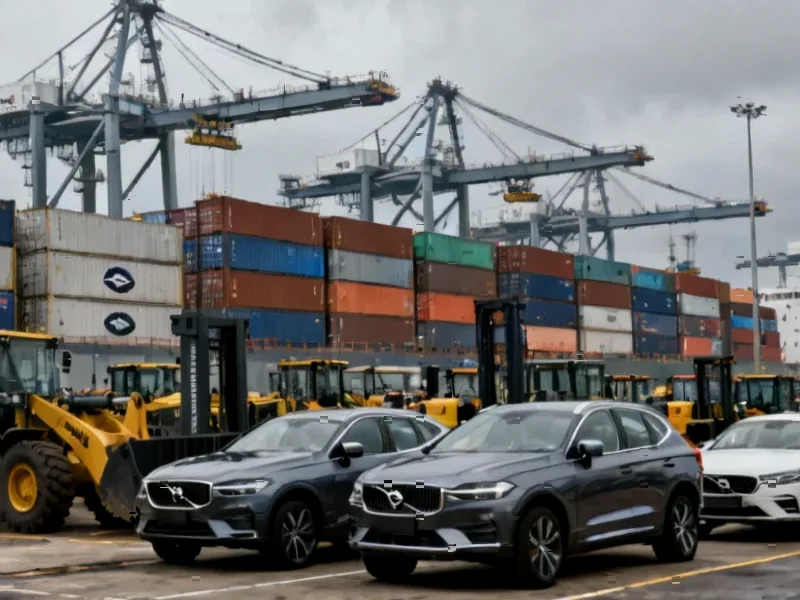According to Financial Times News, Indonesia is negotiating with China over $7.3 billion in debt from the “Whoosh” bullet train project connecting Jakarta and Bandung, which has accumulated massive losses since beginning commercial operations two years ago. The 145km railway, developed jointly by Indonesian and Chinese state-owned companies, was 75% funded by Chinese loans and faces passenger traffic at only one-third of forecasts. Indonesian investment minister Rosan Roeslani confirmed Jakarta is seeking “comprehensive” debt restructuring to prevent potential default, with negotiations focusing on loan periods, interest rates, and currencies. The Indonesian consortium owning 60% of the project reported losses of nearly Rp4.2 trillion ($253 million) last year and another Rp1.6 trillion in the first half of 2025, with Kereta Api Indonesia CEO Bobby Rasyidin calling it a “ticking time bomb.” This financial crisis represents a critical test for both Indonesia’s infrastructure ambitions and China’s Belt and Road Initiative.
Belt and Road’s Business Model Under Scrutiny
The Whoosh project exemplifies the fundamental business model challenges facing China’s Belt and Road Initiative. While often framed as infrastructure development partnerships, these projects frequently function as export vehicles for Chinese construction companies, engineering firms, and equipment manufacturers. The 2% interest rate on Chinese loans—significantly higher than Japan’s competing 0.1% offer—reflects Beijing’s strategy of packaging development finance with guaranteed contracts for Chinese state-owned enterprises. This creates a situation where the lending nation captures immediate economic benefits through contract awards, while the borrowing nation assumes long-term debt service obligations for projects with questionable commercial viability.
The Fundamental Market Mismatch
The core business failure stems from a fundamental market miscalculation. High-speed rail works best connecting major economic hubs separated by 200-800km distances, where it can compete effectively with air travel. The 145km Jakarta-Bandung route represents a strategic misfire—too short to justify the premium pricing needed to cover operational costs and debt service. With tickets costing five times more than conventional rail alternatives, the service appeals only to a narrow segment of affluent travelers, insufficient to achieve the economies of scale necessary for profitability. This pricing disconnect from local purchasing power represents a common challenge for BRI projects in emerging markets, where infrastructure ambitions often outpace economic realities.
Sovereign Guarantees and Political Calculus
Indonesia’s initial decision to select China’s offer specifically because it didn’t require state guarantees has proven strategically shortsighted. As project costs ballooned from initial estimates, former President Widodo ultimately allowed the Indonesian consortium to access state funds and guarantees, creating exactly the sovereign risk exposure the government had sought to avoid. This pattern—where initial “no guarantee” project financing evolves into state-backed bailouts—has become a recurring theme in BRI implementations globally. The current negotiations essentially represent Jakarta attempting to renegotiate terms after the fact, leveraging China’s strategic interest in maintaining positive relations with Southeast Asia’s largest economy.
Broader Implications for Southeast Asia
The Whoosh project’s financial distress sends warning signals across Southeast Asia, where multiple countries are considering high-speed rail projects with Chinese partners. Thailand’s planned Bangkok-Nakhon Ratchasima line and Malaysia’s East Coast Rail Link face similar viability questions. The Indonesian experience demonstrates that even in relatively developed ASEAN markets with substantial populations, the economics of high-speed rail remain challenging without massive government subsidies. This reality may force regional governments to reconsider their infrastructure priorities, potentially shifting focus toward more economically sustainable projects like conventional rail upgrades, highway networks, and port developments that offer better returns on investment.
The Complex Negotiation Dynamics
Both sides enter restructuring talks with constrained options. China faces domestic economic challenges including a property sector crisis that limits Beijing’s appetite for additional bailouts, while Indonesia confronts President Prabowo’s ambitious spending plans that leave little fiscal room for railway rescues. The most likely outcome—payment suspensions rather than debt forgiveness—would merely postpone rather than resolve the underlying economic issues. China may accept temporary payment relief to preserve its strategic relationship with Indonesia and maintain the BRI’s credibility, but long-term viability requires either permanent subsidies or dramatic increases in ridership that current market conditions don’t support.
Lessons for Future Infrastructure Development
The Whoosh project’s struggles offer critical lessons for emerging markets pursuing large-scale infrastructure. First, projects must align with actual market demand rather than political prestige. Second, true cost-benefit analysis should include realistic revenue projections rather than optimistic scenarios. Third, the choice between different international partners should weigh long-term economic sustainability over short-term financing terms. As regional development banks emphasize, successful infrastructure requires integrated planning that connects transportation projects with urban development, commercial zoning, and affordable last-mile connectivity—elements notably absent from the Jakarta-Bandung corridor.




